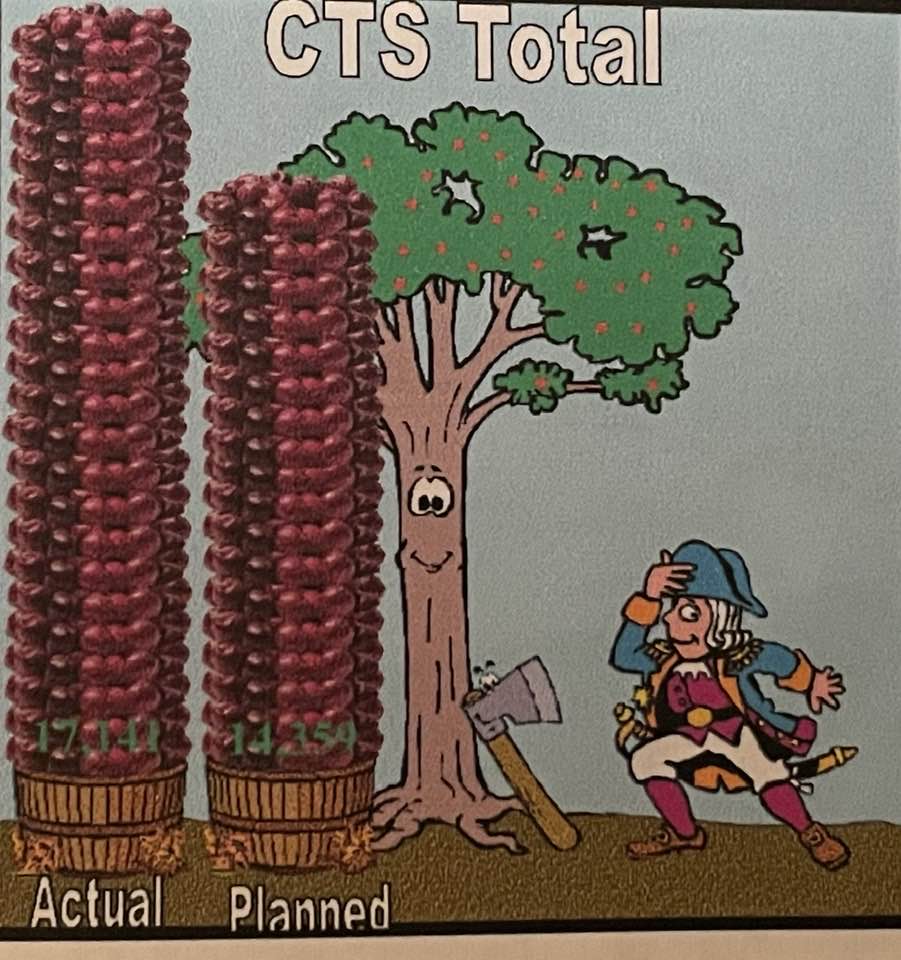MARCH 7, 2024 – (Cont.) About 18 months after he’d taken over the reins, Dan announced that he wanted us—his direct reports—to take turns leading the department’s periodic “business update” meetings. These had been all-department gatherings in the ballroom-turned-corporate meeting venue at a downtown hotel, led by our fearless leader and featuring the department’s year-to-date financial performance, actual vs. plan. He’d add the typical window dressing, highlighting our compliance with “Best Practices” quotas, acknowledging unsung heroes for number of years on-the-job, and handing out paper certificates to the top salespeople. At the back of the room was an ample supply of help-yourself chips, cookies, pop, popcorn, and bottled water for the masses. The meetings were predictably “corporate vanilla,” remarkable for the aggregate employee down-time, especially if you took in account the slow pace of hundreds of people migrating to and from the meeting site six blocks from our office building. With an HP financial calculator a person could probably show that each “business update” meeting produced a drag on the bank’s stock price of 27-cents per share.
Despite my cynicism, when Dan asked for a volunteer to lead the next scheduled update meeting, my arm shot up. I knew the department—and my division—were just coming off a banner quarter of a banner year. No one knew what subsequent quarters would bring, and I figured it would be much easier to lead a meeting that featured success than one that was clouded by unfavorable numbers—especially if the meeting was attended by execs outside the department, which was sometimes the case.
“Great!” said Dan. “Eric’s got the first meeting.” Less than a half hour later I received an email from him detailing his expectations for the update. It was an amusing exhibit of his penchant for micro-management. “You’ll need to have [Sue] order snacks and beverages no later than a week before the meeting date. Also make sure she has the latest reports and names of people to receive awards. Have [Steve, our department financial officer] generate financial reports broken down by division. Adopt a meeting ‘theme’.”
“Adopt a meeting ‘theme’”?! In Dan’s corporate strait-jacketed mind that meant “blue” or “green.” In my maverick mind “adopt a theme” meant “go for broke.” And I did.
It so happened that I’d recently hired a new admin assistant, [Drew]. He was sharp as a tack and though he could conduct himself as a model bank employee, he had a mischievously creative streak that I found refreshing. Behind closed doors I took him into my confidence and mapped out a business update meeting like none other in the history of the bank.
It would highlight my deep commitment to the liberal arts and how they can enrich the lives of everyone in every setting, not the least of which was the corporate world. Over time I’d observed the tension imposed by a fast-changing world; the contradiction between two central corporate imperatives both represented by the oft repeated phrase, “thinking outside the box.” Everyone was told to “think outside the box” at the same time everyone learned to repeat the phrase ad nauseam in ironic proof they were too scared to think outside the bounds of corporate conformity. What the phrase really meant in practice was, “Think independently but don’t.”
The meeting had been scheduled for February—Black history month—which gave me my “theme,” especially in light of the lip service paid to “diversity” by the top white guy executive team and parroted by Dan. But February was also the month of President’s Day—which provided a second theme.
As a Boomer I could never embrace the “President’s” part of the holiday. Did that include Warren G. Harding? Richard Nixon? Back in grade school we celebrated Washington and Lincoln—Father of Our Country and the Great Emancipator, respectively, two of the greatest if not the presidents, both of whom were born in February.[1]
In presenting the heart of the agenda—financial performance—I wanted to depart from the mind-numbing style of bean-counters and the eye-crossing details of P&L statements projected onto a giant screen. To accomplish this I told Drew to develop graphics using two side-by-side stacks of bushels loaded with cherries (in keeping with Washington’s birthday), one stack representing “plan” figures and the other depicting “actual” financial performance. People didn’t need to know the excruciating details beyond the bottom line and the delta between plan and actual. This could be done more effectively with bushels of cherries than with line-by-line numbers.
Where I could have some fun was in all the “fluff” categories—recognition of the division with the leading “Best Practices” performance and the “key values” adopted by the department pursuant to bone-headed “off-site” sessions led by pricey outside consultants. My favorite parts, however, would feature jazz legend Ella Fitzgerald (“A Woman of Creativity and Innovation”), George Washington Carver (“A Man of Creativity and Innovation”), contralto Marian Anderson (“A Woman of Excellence”), Booker T. Washington (“A Man of Excellence . . . Whose middle name, by the way, was Taliaferro”), Martin Luther King, Jr. (“A Man of the People”), Barbara Jordan (“A Woman of the People”), and Harriet Tubman (“A Team Builder”) . . . and . . .
. . . Wolfgang Amadeus Mozart. (Cont.)
Subscribe to this blog and receive notifications of new posts by email.
© 2024 by Eric Nilsson
[1] Two other presidents were born in February—Reagan and Willian Henry Harrison, but Reagan wasn’t elected president until long after I was out of school, and Harrison (the ninth president) died after only 32 days in office.
